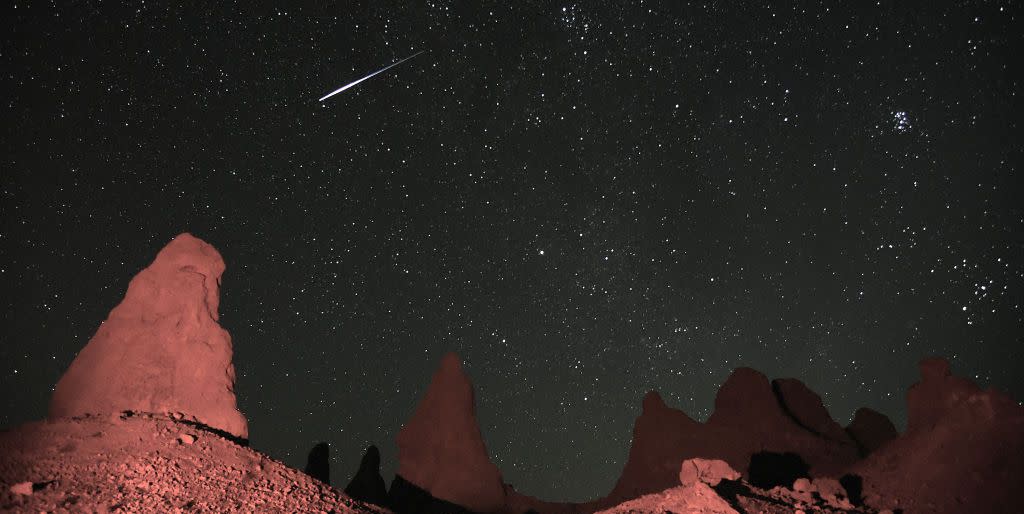FYI: A Lunar Eclipse Is Happening Tonight

While the Fourth of July will treat us to a colorful fireworks display, that's not the only time you can catch some stunning performances up above this month. Throughout July, three unique astronomical events will take place for stargazers to delight in.
First up, there will be a lunar eclipse on no other than the night of America's birthday. As we reach mid-July, Saturn and Jupiter will radiate in the night sky as their orbits bring them the closest they’ll be to Earth all year. Finally, July will close with not one meteor shower, but two… happening at the same time! Here are the dates you need to know.
Penumbral Lunar Eclipse: July 4 to 5
According to timeanddate.com, a lunar eclipse will take place on the night of July 4, 2020, with visibility in North America, South America, and Africa. This will be a penumbral lunar eclipse, which occurs when the Sun, Earth, and the Moon are imperfectly aligned, creating a dark shading on the Moon's surface.
The eclipse will begin on July 4, at 11:07 p.m. EDT and last until 1:52 a.m. EDT. As long as weather conditions are good, New York City is predicted to have a front row seat. It is predicted that the eclipse will reach its climax at around 12:29 a.m., when the sky will be the darkest.
Jupiter and Saturn reach peak brightness: July 14, July 20
Later on in the month, the solar system's two largest planets will have a literal glow up. According to AccuWeather, Jupiter and Saturn will reach their peak brightness for the year. This happens as the planets reach their opposition, or "the point in their orbits when they are closest to the Earth." This means we'll have the opportunity to see these planets closer than ever.
Jupiter will reach its opposition on July 14, 2020. Meanwhile Saturn is expected to hit its opposition on July 20, 2020. While using a telescope to observe this phenomenon is recommended, those without telescopes should still be able to spot the planets up above as they'll shine much brighter than the stars.
Double Meteor Shower: July 28 to 29
This year, the Southern Delta Aquariid shower will be active from July 12 to August 23, 2020, writes the American Meteor Society on its 2020-2021 meteor calendar. Also beginning in July, is the alpha Capricornids shower, which will be active from July 3 to August 15.
Both showers are expected to hit their peaks on the night of July 28 to 29, 2020, creating simultaneous double showers! While the Delta Aquariids are best seen in the Southern hemisphere, there is visibility at a lesser rate in the northern hemisphere. Regardless, the alpha Capricornids shower can be seen equally from either side of the equator. "What is notable about this shower is the number of bright fireballs produced during its activity period," AMS writes about the alpha Capricornids shower. As these two showers collide, stargazers can expect up to 20 meteors per hour. The best time to watch these shows is after midnight and into the pre-dawn hours as less moonlight makes the fainter meteors easier to spot.
You Might Also Like